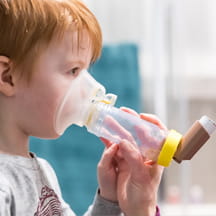Since its approval in 2019, the Amplatzer Piccolo™ Occluder has improved outcomes for premature babies with patent ductus arteriosus (PDA), a congenital heart defect. The occluder provides a minimally invasive way to close a persistent opening between blood vessels, which can cause heart failure if left untreated.
But there’s one problem: Some babies are too sick to be moved to a catheterization lab for the procedure.
Now, a new protocol at Children’s Hospital Los Angeles (CHLA) allows patients to receive the device without ever leaving the neonatal intensive care unit.
“It’s much better and safer for the babies to keep them at the bedside,” said Patrick Sullivan, MD, an interventional cardiologist in the Heart Institute at CHLA. “Instead of bringing babies to the cath lab, we bring the cath lab to the NICU.”
The Piccolo protocol
Many babies who need PDA closure are extremely premature, with a gestational age as young as 22 weeks. Although some are more fragile than others, all have special needs.
“It’s critical to keep their temperature and ventilator settings stable,” said Jennifer Shepherd, MD, a neonatologist in CHLA’s Fetal and Neonatal Institute. “Any small stress or movements — such as transporting a baby down several long hallways and riding in an elevator to and from the cath lab — can put them at risk for a brain bleed or losing their endotracheal tube or IV lines.”
Sullivan and Shepherd led a multidisciplinary team that developed a way to safely bring the intricate Piccolo procedure to a baby’s bedside. The protocol includes four key elements:
- Mobile imaging. X-ray video guidance is critical for the safety and success of the procedure. To perform this imaging at the bedside, the team brings a portable mini C-arm X-ray machine into the NICU.
- Special procedure table. Because NICU beds contain metal, the C-arm X-ray machine cannot be used directly on the isolette. Instead, the team uses a special procedure table, which requires moving the baby from the isolette. The team will soon replace the mini-C X-ray machine with a portable fluoroscopy machine that fits directly in the isolettes.
- The right room. Larger, double rooms more easily fit all the needed equipment and team members. The NICU staff places babies who may need PDA closure in these larger rooms as soon as they arrive at the hospital to eliminate the need to change rooms later.
- Temperature control. The room is kept at 80 degrees during the procedure to keep the baby’s temperature stable.
‘A huge benefit’
The team performed its first bedside Piccolo PDA closure in July 2023. It has now completed 12 closures in the NICU, and all have gone smoothly.
“Every Piccolo procedure is now done at the bedside,” Sullivan said. “We have become very comfortable with this setup, very quickly.”
Keeping babies in the NICU also means neonatologists and other specialists are nearby if needed, Shepherd said. “It’s turned into a huge benefit. We don’t have to move the baby, and all our NICU resources — from neonatologists to nurses to respiratory therapists — are readily available.”
CHLA is also participating in a multicenter, randomized clinical trial comparing Piccolo PDA closure to conservative medical management.
“We believe that closing the PDA in a minimally invasive way — and without the risks of transporting the patient — most likely benefits the baby,” Sullivan said. “This trial will help answer that important question. We are excited to participate in these studies and to offer the least invasive options for these fragile babies.”
An earlier version of this story was published by Children's Hospital Los Angeles.



